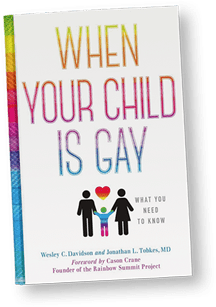Theatre critic Robert Hofler’s critique of Lincoln Center’s Winter 2014 issue’s lack of mention of playwright Moss Hart’s supposed homosexuality or bisexuality can be read in The Advocate.com’s “Op-Ed: Moss Hart and Posthumous Closeting.” Hart’s only book, a memoir Act One, written in 1959, and revived at Lincoln Center now, does not delve into the theatre director and playwright’s sex life nor does the Lincoln Center booklet.
Was He or Wasn’t He?
Apparently those in the entertainment business speculated that Hart was gay. (His writing partner George S. Kaufman was not). Hart may have been gay. His children, Christine and Christopher, whose mother was the singer and television star Kitty Carlisle Hart, said their father suffered from bouts of depression. It is said that Kitty asked her husband, amid rumors, if he were homosexual and he denied it. However, after Steven Bach’s biography of Hart was published, forty years after Hart’s death, Kitty, fearing reporters, kept Moss’s archives and secrets under lock and key.
Only His Shrink Knew For Sure?
It is also said that Hart frequently visited a notable psychiatrist famous for treating homosexuals such as Tennessee Wiliiams. Although you could slant these facts to make a case for Hart’s gay orientation, I take exception for Hofler’s rationale for finding within the book and play the clues that he perceives to be conclusive to Hart’s sexual identity.
Hofler’s Trial Proofs Don’t Conclude
To me, Hofler’s reasoning smacks of gay stereotypes. I sat through the play and did not come away with any conclusions about Hart’s sexual orientation, nor did I care. Hofler, author of The Man Who Invented Rock Hudson, writes in The Advocate.com that there are three obvious clues: Hart’s love of the theatre, his disinterest in girls and his non-athletic nature.
· Hart loved the theatre. So what? I know gay men who don’t go to the theatre. Living in the Bronx, poor, with boarders who pay rent, a drunken British father, a drudge of a Mother, the only role model he liked in the house was his Aunt Katherine who was a theatre devotee. No wonder he wanted to be transported by the theatre to another time and place.
· Hart was not athletic. He described himself in the book as “the non-athletic boy, the youngster who liked to read.” He also had friends who were athletic in the play. You don’t have to be athletic not to be gay. Think Michael Sams.
· Hart was not interested in girls even though he was in his twenties. He also was dirt poor and would not have had the money to date. He was expected to work and had to drop out of school where he would have met girls. He had a single-minded vision to succeed in show business.
· Times were different then. One week after Hofler’s article came out, Cameron Diaz announced she had “slept with a woman.” For Hart to come out in the 1930’s when he was riding the crest of popularity with Kaufman for “The Man Who Came to Dinner” and “You Can’t Take It With You,” would have been foolish. He would have been blacklisted even before the McCarthy era.
Who Knows?
Bisexual, asexual, homosexual. Who cares? In any case, what we do know is that Hart was an ambitious protege whose play Act One still draws crowds that included me.

When Your Child Is Gay: What You Need To Know
For more detailed advice, see book, co-authored with a mother of a gay son and a psychiatrist, Jonathan L. Tobkes, M.D.